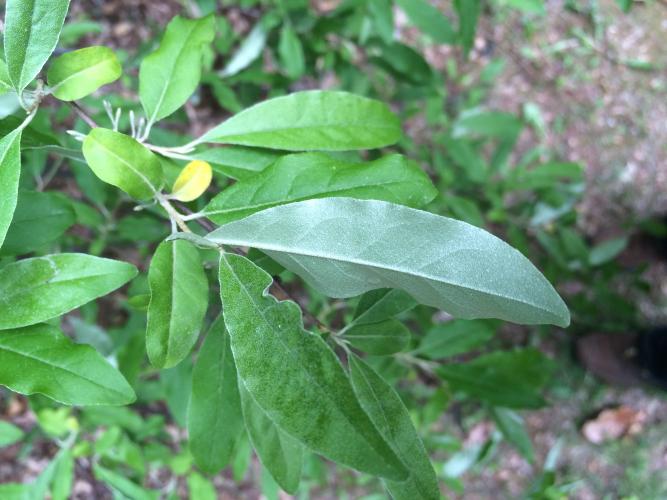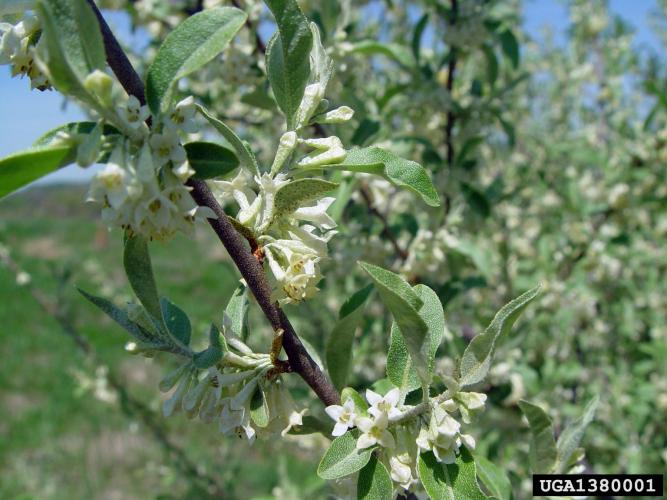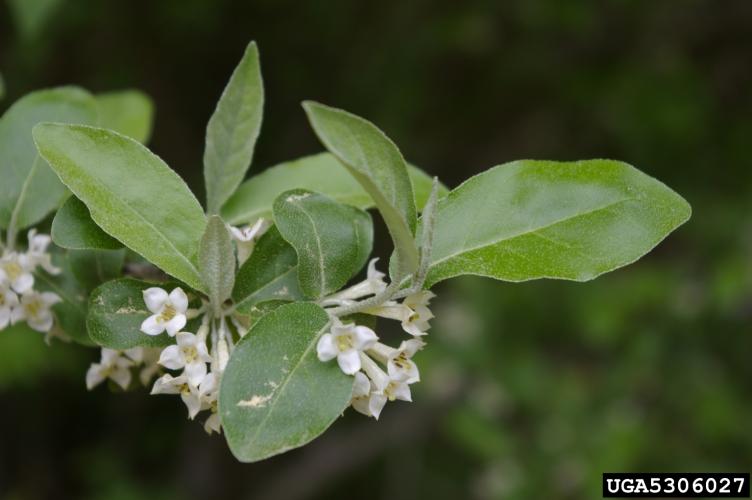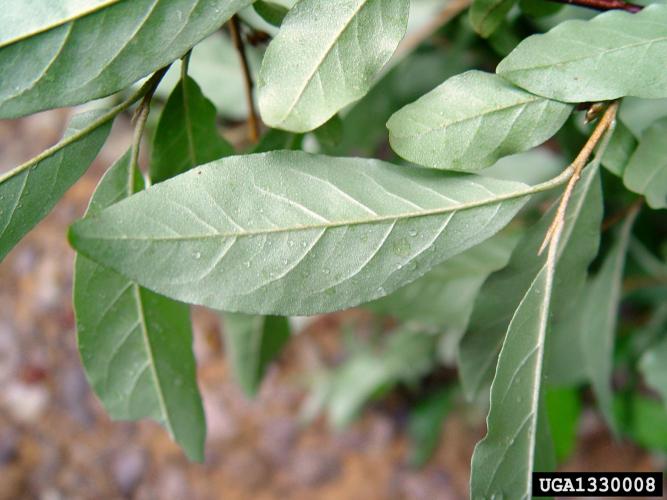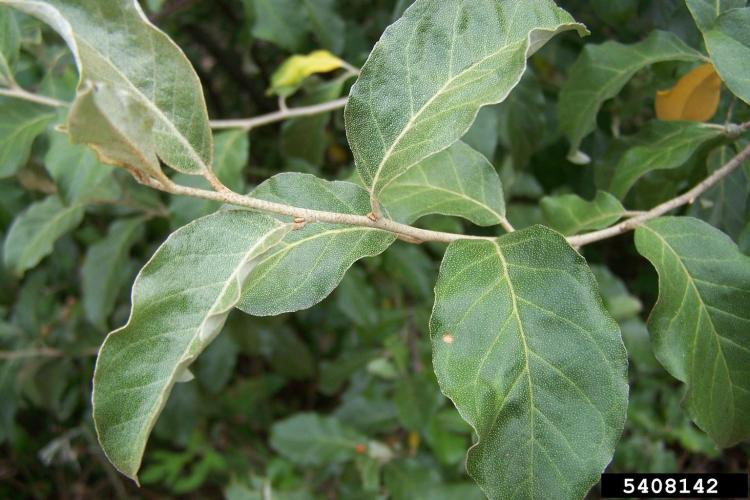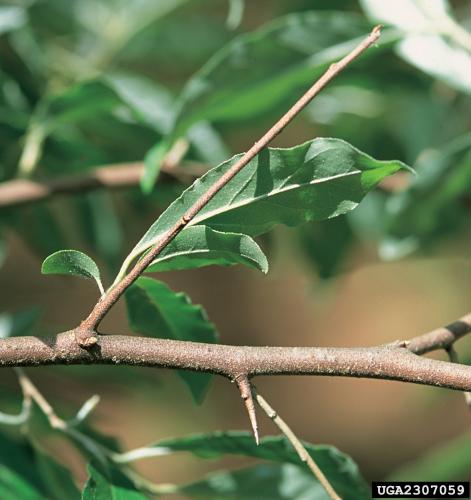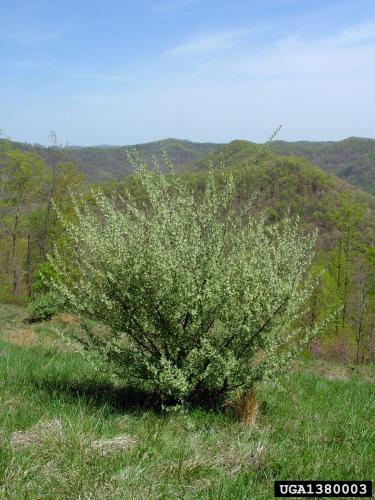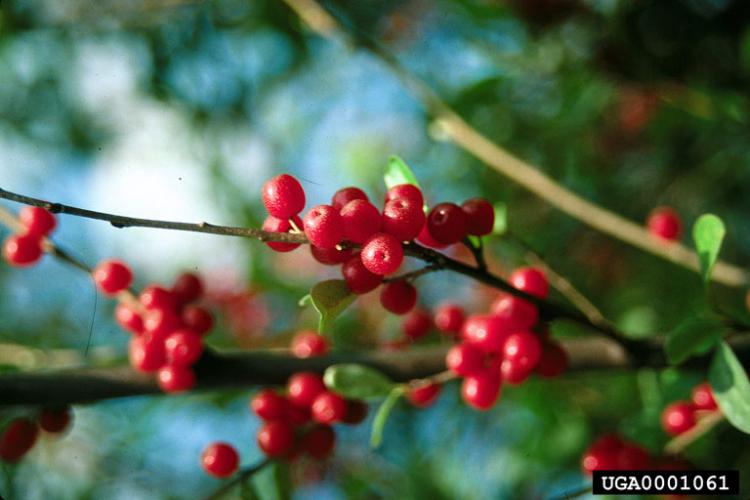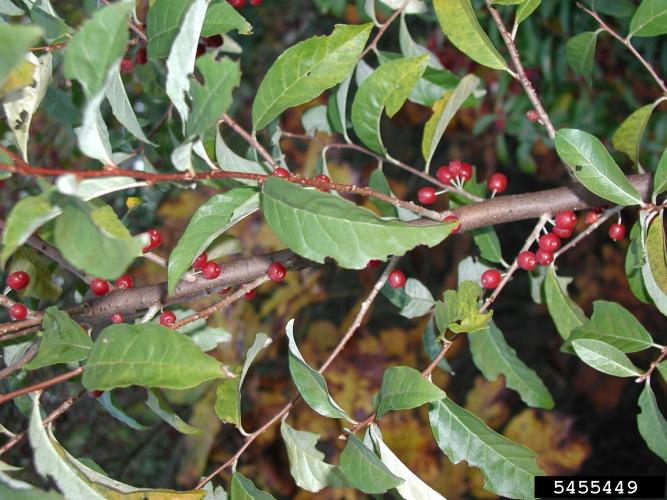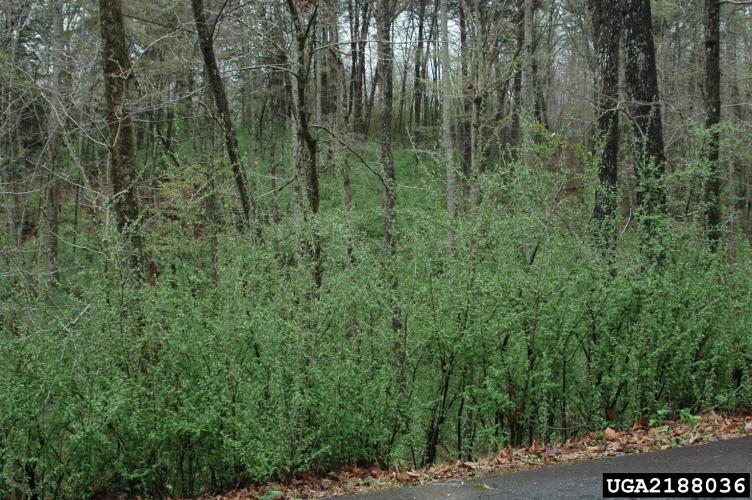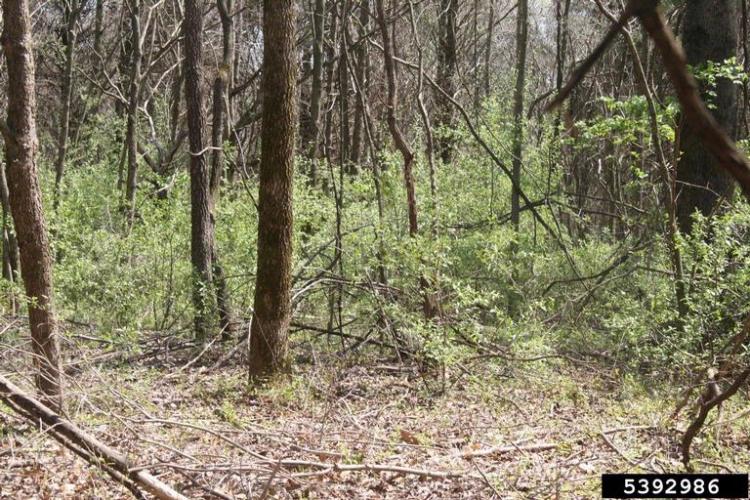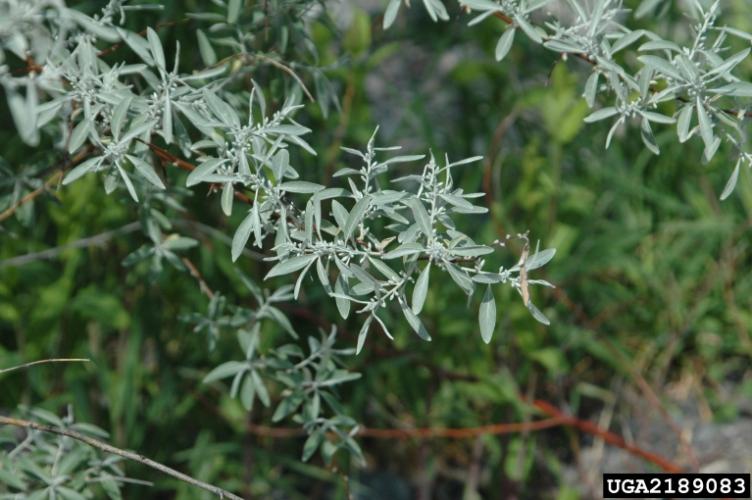Autumn Olive
Identification
Appearance
Elaeagnus umbellata is a deciduous shrub from 3-20 feet in height with thorny branches. It is easily recognized by the silvery, dotted underside of the leaves.
Foliage
Leaves are alternate, 2-3 inches long and 1 inch wide. The margins are entire and undulate. Leaves are bright green to gray green above and silver scaly beneath with short petioles.
Flowers
Small, yellowish tubular flowers are abundant and occur in clusters of 5 to 10 near the stems in early summer.
Fruit
Fruits are round, red, juicy drupes which are finely dotted with silvery to silvery-brown scales. Each drupe contains one seed. Fruits ripen from August to November.
Check out the downloadable fact sheet above.
Biology
Ecological Threat
Autumn olive invades old fields, woodland edges, and other disturbed areas. It can form a dense shrub layer which displaces native species and closes open areas.
Origin
Native to China and Japan and was introduced into North America in 1830.
Habitat
Man-made or disturbed habitats, forest edges, meadows, and fields. This plant that thrives in a variety of conditions, in part because it is capable of fixing nitrogen.
Life Cycle
Plants flower and develop fruits annually after reaching 3 years of age, although 2-year-old plants have been known to flower. A single plant can produce up to 8 pounds of fruit. Birds seem to be the primary vector for seed dispersal, although raccoons, skunks, and opossums are also known to eat the fruit.
Vermont Distribution
How You Can Help
Native/non-invasive alternatives
Black Chokeberry (Aronia melanocarpa), Dogwoods (Cornus sp.), Serviceberry (Amelanchier arborea), Common winterberry (Ilex verticillata)
Native Perennials and Shrubs for Vermont Gardens
Alternatives to Common Invasive Plants and Characteristics of Select Alternatives
Citations
Photo Credit
E Spinney, VT FPR
1380001,5392986,1380003, 2188036, 1330008, Chris Evans, University of Illinois, Bugwood.org
0001061, James R. Allison, Georgia Department Natural Resources, Bugwood.org
5306027, Nancy Loewenstein, Auburn University, Bugwood.org
5455449, Leslie J. Mehrhoff, University of Connecticut, Bugwood.org
2307059, James H. Miller, USDA Forest Service, Bugwood.org
5408142, Karan A. Rawlins, University of Georgia, Bugwood.org
UGA2189083, Chris Evans, University of Illinois, Bugwood.org
Information Credit
Video: Outsmart Invasive Species Project
DNCR PA, Autumn and Russian Olive
Autumn olive, The Nature Conservancy
